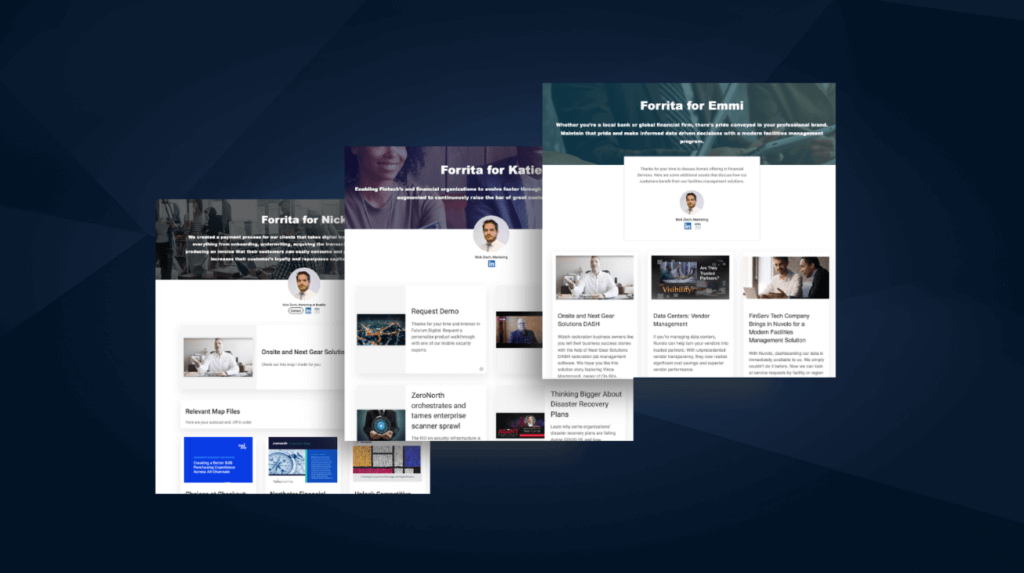Most modern CS organizations that have invested in customer enablement do so through personalized microsites, or landing pages for each customer that contain all the customer-facing content that is relevant to them. And, to be honest, it makes a lot of sense – they hold all of the content that’s relevant to them in one place, and you get some basic analytics on how they’re interacting or looking at the content. I mean, seriously, even WE used to tout them.
But, we’ve learned our lesson, and I’m writing this post to tell you that you (probably) shouldn’t be creating these custom microsites… because there’s a better way. Check out the video below, or keep reading for more detail.
The Problems with Customer Microsites
So a HUGE caveat before I begin: There is nothing wrong with a well done customer microsite. They’re great, they’re effective, they give the CS team analytics, and they make the customer experience even better.
The problems start when it comes to how a CS team is going to create, maintain, and distribute these microsites. For any Customer Success team at a reasonable scale, it simply becomes untenable to keep up with a process that keeps these pages current. Three major reasons why:
Microsites Don’t Scale
The first major problem with providing microsites to customers is that they are simply not useful at scale. Let’s take a look at an example:
Imagine you’re the head of CS at a company with 5 enterprise clients. You roll out custom microsites for each one and it’s going great – they’re getting updated appropriately and they’re getting great engagement.
But, eventually the company scales, and 5 turns into 50, which turns into 200. Are you really going to be able to keep 200 customer microsites up-to-date for your customers? Even if you only focused on your top 50, that’s still a herculean task that takes a TON of time out of your CSM’s day. Not to mention that even if you were update them constantly, you’re likely behind on all of the new content your marketing team is producing… which leads us to our next point:
Microsites are not actually personalized
Now, I know what you’re thinking, “if you’re designing each microsite for the customer, of course they’re personalized”. And, to a certain extent, that’s correct.
But, is everyone at your customer looking for the same thing?
Realistically, you have multiple user personas at each customer: admin, points of contact, ops, daily users – and they are all going to have different needs. Say you want to upload a QBR to a microsite.. Is that really going to be relevant for everyone? It’s impossible to give each user an individual view of what’s most interesting to them about your brand – this eventually leads to a drop in engagement. Speaking of which,
Microsites get poor customer engagement
It’s sad, but true. And the problem is twofold:
- The above issues with scale and personalization mean that these pages and microsites become less relevant for each customer. That means they don’t open the emails when they’re sent, and it’s easier and better for them to just message their CSM, costing you time and money.
- Relevancy aside, having customers go to a standalone page outside of the product immediately leaves engagement on the table. Most users have too much going on during their day and are not willing to go out of their way to seek help – they’d rather just call you.
So, with poor personalization, engagement, and scale, what is there to do?
Introducing In-App Customer Portals
At Enablix we’ve created an in-app customer portal that allows CS teams to share content and resources more effectively with each customer. These in-app portals address where microsites fall short, and give you an easier way to support all your customers, at scale. Check it out:
With Customer Portals you can:
- Maintain thousands of customers at once. Instead of updating multiple microsites, these portals allow you to share one piece of content with as many customers or segments as you want, at the same time.
- Personalize support for each customer. These portals will look different for every member of the team, based on their content engagement, interactions and history– making them personal to each customer without you lifting a finger.
- Increase Engagement. By keeping customers in-app and giving them the ability to search for whatever they need, engagement can be 6 to 7 times higher than with a traditional microsite.
Want to learn more about how you can get in-app customer portals? Reach out!




